#Century Electronic City Phase 1
Explore tagged Tumblr posts
Text
Century Electronic City Phase 1: 6 Acres of Modern Amenities
Modern living at Century Electronic City Phase 1! The heart of one of Bangalore's most vibrant tech hubs, this residential oasis offers a harmonious blend of convenience and luxury. Let's delve into what makes Century Electronic City Phase 1 a standout choice for those seeking contemporary amenities in a prime location.
Location and Connectivity
The heart of Electronic City, Century Electronic City Phase 1 offers a prime location that seamlessly blends work and leisure. This vibrant neighborhood is a hub for tech companies, providing residents with unparalleled career opportunities within arm's reach. Connectivity is key at Century Electronic City Phase 1. With easy access to major highways like nice Road and Hosur Road, commuting to other parts of the city becomes a breeze. The upcoming Metro line extension further enhances accessibility, making travel even more convenient for residents. Surrounded by shopping malls, restaurants, and recreational facilities, this project ensures that residents have everything they need right at their doorstep. Whether it's grabbing a quick bite or unwinding after work, there's always something exciting to explore in the vicinity of Century Electronic City Phase 1.
Overview of the Project
Welcome to Century Electronic City Phase 1, a vibrant and contemporary residential project located in the heart of Bangalore's tech hub. This meticulously planned development spans over 6 acres and offers a perfect blend of luxury and convenience. The project features elegantly designed apartments that cater to modern living standards, with spacious layouts and premium finishes. Residents can enjoy stunning views of the surrounding greenery from their balconies, creating a serene oasis amidst the bustling city life. Century Electronic City Phase 1 boasts amenities such as a swimming pool, fitness center, landscaped gardens, children's play area, and more. Whether you're looking for relaxation or recreation, this project has something for everyone. With its strategic location near major IT companies, educational institutions, shopping centers, and healthcare facilities, Century Electronic City Phase 1 provides unmatched connectivity and accessibility for its residents. Experience urban living at its finest in this dynamic community by Century Developers.
Modern Amenities Offered
Step into a world of modern comforts and conveniences at Century Electronic City Phase 1. This futuristic residential project boasts an array of amenities designed to elevate your lifestyle to new heights. From fitness centers to lush green gardens, every corner of this development is crafted with your well-being in mind. Imagine starting your day with a refreshing swim in the infinity pool or unwinding after work in the luxurious spa facilities. For those who love staying active, there are sports courts and jogging tracks available for you to maintain a healthy lifestyle. You can also host gatherings with friends and family in the BBQ areas or relax under the stars at the rooftop sky lounge. With round-the-clock security, ample parking spaces, and high-speed elevators, Century Electronic City Phase 1 ensures that every aspect of your daily life is taken care of seamlessly.
Why Choose Century Electronic City Phase 1?
Looking for a modern and convenient lifestyle in Bangalore? Century Electronic City Phase 1 offers the perfect blend of comfort and sophistication. With 6 acres of thoughtfully designed amenities, this project provides everything you need for a fulfilling living experience. From lush green spaces to fitness centers and recreational facilities, Century Electronic City Phase 1 caters to all your lifestyle needs. Whether you enjoy unwinding by the pool or staying active at the sports courts, there is something for everyone here. The strategic location near Electronic City ensures easy access to major IT hubs, educational institutions, healthcare facilities, and entertainment options. With seamless connectivity to key areas in Bangalore, commuting becomes hassle-free for residents. Choosing Century Electronic City Phase 1 means investing in quality construction by one of India's leading real estate developers. Century Group's commitment to excellence and customer satisfaction makes them a trusted choice among homebuyers. Experience the best of urban living with unmatched amenities and convenience at Century Electronic City Phase 1.
About Builder : Century
When it comes to real estate development in India, one name that stands out is Century. With a legacy spanning over four decades, Century has been synonymous with quality and innovation in the construction industry. The company's commitment to excellence is reflected in every project they undertake. Century has earned a reputation for delivering premium residential and commercial spaces that exceed expectations. Their attention to detail, focus on sustainability, and adherence to timelines have made them a trusted name among homebuyers and investors alike. What sets Century apart is their relentless pursuit of perfection and dedication to customer satisfaction. By combining modern design aesthetics with cutting-edge technology, Century ensures that each project surpasses industry standards. With a track record of successful developments across Bangalore, including Electronic City Phase 1, Century continues to raise the bar in the real estate sector. Trusting your dream home or investment with Century means investing in quality craftsmanship and unparalleled expertise.
Conclusion
As you can see, Upcoming project in Electronic City offers a unique blend of modern amenities and strategic location that make it an ideal choice for homebuyers and investors alike. With its facilities, lush green spaces, and connectivity to key areas in Bangalore, this project by Century is set to redefine urban living. Whether you are looking for a comfortable home or a lucrative investment opportunity, Century Electronic City Phase 1 has something to offer everyone. Don't miss out on the chance to be a part of this vibrant community where convenience meets luxury. Choose Century Electronic City Phase 1 for your next real estate venture and experience contemporary living at its finest with all the conveniences right at your doorstep.
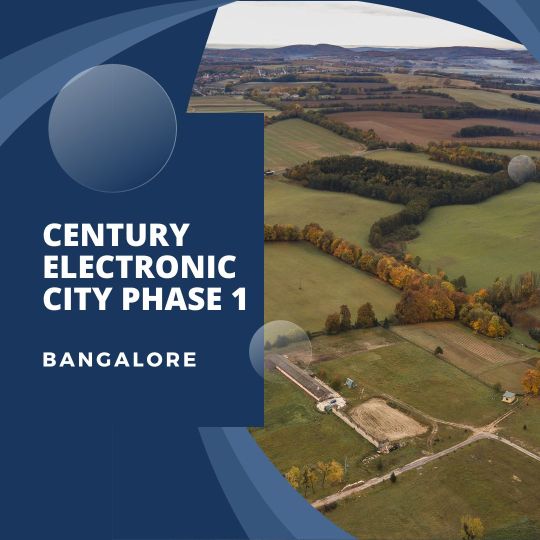
READ MORE BLOG HERE
2 notes
·
View notes
Text
The best timepiece in the world (IMO): Strasbourg Cathedral's Astronomical Clock

I could go on about this thing for ages. There's so much history, so many symbols to spot, and so much information on display... This is going to be a long one.
I guess I'll start with the artistic aspect on which I have the least to say because it's the least up my alley. There's loads of mythology and Christian symbolism going on on this 18-metre tall monument, and these are the main draw for the general public, because they move around.

Like cuckoo clocks in neighbouring Schwarzwald, this astronomical clock has automatons. Every quarter hour, the lower level of the photo above sees a change of "age": a child, a young man, an adult and an old man take turns to be in the presence of Death, whose bells toll on the hour. At high noon, the upper level also moves, with the 12 disciples passing before Christ, and the rooster at the very top crows.

Moving on to what really makes me tick: the amount of information on this clock is incredible. The time, obviously, but actually two times are on display on the clock at the bottom of the picture above: solar time and official time. Given Strasbourg's position in the time zone, there is a 30-minute discrepancy between the two. Then there's all the astronomical stuff, like the phase of the Moon (just visible at the top), the position of the planets relative to the Sun (middle of the picture), a celestial globe at the base (pictures below, on the right)...


The main feature behind the celestial globe is another clock displaying solar time, with the position of the Sun and Moon (with phases) relative to the Earth, sunrise and sunset times, surrounded by a yearly calendar dial. These have remarkable features, such as the Moon hand that extends and retracts, making eclipses noticeable, and the calendar has a small dial that automatically turns to place the date of Easter at the start of each year. This sounds easy, but look up the definition of Easter and note that this clock is mechanical, no electronic calculating power involved! Either side of the base, the "Ecclesiastic Computer" and the "Solar and Lunar Equations" modules work the gears behind these features.
The accuracy of this clock and its ambition for durability are truly remarkable. Relative to modern atomic time, it would only need adjusting by 1 second every 160 years, and it correctly manages leap years (which is not as simple as "every 4 years"). It just needs winding up once a week.

Finally, the history. The monumental clock was built in the 16th century, and used the calendar dial above, now an exhibit in Strasbourg's city history museum. It slowly degraded until the mid-19th century, when Jean-Baptiste Schwilgué restored the base and upgraded the mechanisms. The "dartboard" on the old dial contained information like the date of Easter, whether it is a leap year, which day of the week the 1st January is... - all of which had to be calculated by hand before the dial was installed! - and was replaced by the Ecclesiastic Computer, which freed up the centre space for the big 24-hour clock, complete with Solar and Lunar Equations.
As you may have gathered, I am a massive fan of this clock. Of course, nowadays, all the imagery and information would easily fit into a smart watch, but a smart watch isn't 18 metres tall and powered by gravity and gears!
#France#Alsace#Strasbourg#Cathédrale Notre-Dame de Strasbourg#horloge astronomique#astronomical clock#best timepiece in the world#fight me#or rather raise me a more impressive one if you think you've got one#only downside is that it's tricky to get good photos#it's rather dimly lit and using the flash is not a good idea#2019-09
19 notes
·
View notes
Text
10 Reasons Why You Should Choose Prestige Lavender Fields @ Lakeside Habitat Phase 2

Are you considering a new home in Prestige Lavender Fields @ Lakeside Habitat Phase 2 in Bangalore? Even if you’re still undecided about making a move, here are ten reasons why Prestige Lavender Fields @ Lakeside Habitat Phase 2 is an excellent choice.
1. Prestige Lavender Fields Unrivaled Location: Centrally located between the buzzing metropolis of Bangalore City and Electronics City, this privately gated community has quick access to town. Residents can conveniently access some of Bengaluru’s top destinations with ease. Additionally, CLF is just minutes away from an array of world-class schools, restaurants, hospitals and malls.
2. Prestige Lavender Fields Unique Amenities: In Prestige Lavinder Fields estate you’ll find an array of features that make it unique from the other gated communities in Karnataka. You can take a dip in its exquisite pool or go for a refreshing walk around its well-manicured garden courts; get boutique fresh groceries from its village style shops; and enjoy your days around its calm lake areas -all within the security of their private fences!
3. Prestige Lavender Fields High Security: All properties have modernized security systems integrated with CCTV surveillance for overall safety and convenience for residents living inside this estate. This includes 24/7 patrolling guards stationed at all strategic points and intercom system as a quick form of communication between residents and security personnel when needed!
4. Prestige Lavender Fields Eco Friendly & Sustainable Living Environment: Living spaces here are designed in compliance with the best green building standards that help reduce energy consumption while maintaining optimum comfort levels with your family indoors.. The Solar farms located on-site help light up ambiences at night while saving energy costs during hot summer days!
5. Prestige Lavender Fields Award Winning Community Designation: Costantino International Landscape Awards 2014 was awarded to this community as part of its prestigious title since it ensures all landscapes become more livable as they’re designed according to sustainable urban practices – preserving biodiversity while aesthetically pleasing to residential environments nearby!
6. Prestige Lavender Fields Low Impulse Noise Vibration – Unlikely other neighborhoods close by where loud street sounds penetrate walls surrounding homes causing uncomfortable noises indoors, Prestige Lavinder Fields has low impulse noise vibration levels due to strategically placed noise reducing shields installed on both entrance roads leading into their enclosed community gates!
7. Prestige Lavender Fields Easy Accessibility: CLF Township offers easy accessibility via expressways connecting them directly towards key major cities like Bengaluru International Airport (BIA), Electronic City & Mysore Road ; while always having employees who assist drivers whenever they face parking trouble in public areas too! Besides these major highways there are several alternative avenues which offer transport solutions into downtown Bangalore; like train routes along one side or taxi services running beside another section providing passerbyers uninterrupted transportation solutions throughout all hours!!
8. Prestige Lavender Fields Clean Surroundings: You won’t find any unpleasant waste or garbage littered around these pleasant surroundings because dedicated garbage management personnel ensure every single bit gets collected thrice weekly (on established designated days) ; thoroughly disposing anything unwanted or discarded before getting into people’s hands thus keeping their clean & sky maintained high!!
9. Prestige Lavender Fields Socialization Programs For Kids: Exclusive kids playgrounds and regular socialization activities organized by local residents ensure young children get trained on much needed soft skills required everyday such 21st century classroom life while growing up together whole discovering new hobbies such playing instruments together in fun enjoyable music captures – even though none end up knowing how to really play something professionally but none minds cause everybody gets benefitate tremendously here by working closely together learning inherent values essential throughout life cycle!!
10. Prestige Lavender Fields Outdoor Amenities suitable For Everyone: This highly sought after neighborhood enclave provides ample walking trails filled with blooming plants surrounded those trees allowing families exercise outdoors without stepping far away; There be also Tennis courts near facilities which let parents spend quality time working their cardio muscle strength whilst their little ones look on amazed watching professionals hit balls back forth over netting settings installed… And If swimming looking then Olympic sized pool indoor available exclusively for members only helps relax breezy hot summer anytime!!
0 notes
Text
10 questions for me
tagged by @akakeiiji SAGE BABY THESE TAG GAMES ARE GIVING ME LIFE
1.) What is your least and most favorite thing about your star sign?
Uh I’m an August leo, but I don’t really know much about star signs in general? But my chemistry teacher in high school used the mnemonic “LEO the lion says GER” to help us remember redox reactions (Loss of electrons = oxidization, gain of electrons = reduction) so I guess that’s my favorite part about being a leo? Sorry I don’t really have a better answer, my inner science/chemistry nerd jumped out. Hopefully no one who reads this hated high school chemistry too much.
2.) What time do you usually sleep and wake up?
Sleep: 3:45 AM
Wake up: 9:50 AM
Extra nap: somewhere in between 3-6 PM.
If you all couldn’t tell my sleep schedule is not great.
3.) What odd, totally random childhood memory stuck with you throughout the years?
When I was really young, my family travelled to China to see friends + relatives. When I was there we visited the Great Wall. I managed to climb to one of the peaks/towers in the wall, but I was super scared of heights and thought I was gonna fall off so when we had to climb back down I sat down and butt dragged myself down each step.
4.) If you could write a book, what would it be about?
I get asked this question a lot (because I help out with first-year orientation at my university and we play a lot of icebreakers). honestly my answer changes each time but I think I’d write a “gratitude book.” I’ve had this idea for a while but basically at some point in my life I want to write and self-publish/publish a collection of letters to the people who have changed/influenced my life in a significant way. I have a list on my phone that is just people I want to write a letter to: parents, brother, teachers, friends, ex-boyfriends (I’ve had amicable breakups and I’m still in pretty regular contact with people I’ve dated), mentors, etc. I just want the people who know me to understand how much they mean to me and that they are amazing individuals.
If I can’t do this then I’mma write a book about the history/development of fan culture/fandoms and fan generated content in the 21st century. I hate it when people demonize fan culture or mock it. Hands down some of the best writing I’ve ever read has been fanfiction/fan content. There are so many talented artists/writers/singers/creators who don’t deserve the “mindless/deranged/dumb fan” narrative that mainstream media pushes. I don’t understand how mocking/belittling/de-legitimizing the passion, enthusiasm and talent of fan creators helps anyone and I will fight anyone who says we’re only just “dumb fans” like FOK YOU TOO fandoms have some amazing and brilliant people who create safe + accepting spaces while generating complex and interesting content. And you bet your ass I will write a whole book that pushes back on the deranged fan stereotype --thank you for coming to my ted talk.
5.) Who was your first anime/fictional crush? Why that particular character?
Saito Hajime from Hakuouki. I mean, have you seen this man??? Like - he’s so graceful and a badass when fighting, not to mention that he takes advantage of his left handed sword handling to throw opponents off. Also I was in peak teenage angst phase, so ofc I was obsessed with the ‘dark and silent’ type character. Anyways this man is fine AF and i have rewatched Hakuouki multiple times because he’s is still *THAT* handsome.
6.) If you could put yourself in any fictional universe, which one would you pick? Why?
The universe of Kekkai Sen Sen (Blood Blockade Battlefront). Listen. The way this universe execute magic realism/urban fantasy so well I cannot. Like - it’s such a wacky and crazy world, and of course Hellsalem’s lot is probably like one of the most dangerous places to be ever but like -- I don’t mind? Honesty, as long as I had powers of my own I would be okay (i think?). I just love how there are mundane magic things that happen but also really wacky/chaotic things like having a giant materialize in downtown New York City. I mean there’s literally a flying hospital with a magic doctor who can split her self up into min selves to treat more patients like please send me there TODAY. Anyways if I ended up in that universe I would want to have some kind of healing/shielding/defensive superpower because a lot of innocent everyday residents get caught up in the chaotic/violent supernatural hijinks of the city and I want to help out in any way I can. In conclusion, I would like to be transported to Hellsalem’s Lot for the sole purpose of meeting Steven A. Starphase because that man is damn attractive and a badass and I am such a simp for him.
7.) What’s the last compliment you received?
I don’t remember Uh, I actually really can’t recall the last compliment I received but I remember a really memorable compliment I got was that I’m really easy to talk to? The person said that when they first met me I had a “disarming friendliness” that made them feel a lot less anxious and more at home + they felt like I was very genuine and invested in getting to know them. Uh idk if that’s true but hearing that made me really happy :)
8.) What is the one thing you miss the most during quarantine? (Asides from being with other people, ofc)
Dancing + music. I’m part of a dance group at my university + I love attending free workshops + classes in my community. I really miss going to practice with my friends and having fun with them in the studio. :( I also play flute for the university orchestra and we probably won’t be allowed to meet/rehearse at all for the next school year (bc social distancing/quarantine) so I’m sad because I miss being involved with art stuff.
9.) When/where do you feel most content?
By myself, sitting on my bed while sunlight is shining into my room through the windows.
10.) What is a food that you hate with burning passion and will never eat?
Eggplant. ISTG I am allergic to that shit like every time I ate an eggplant dish (because my parents forced me too as a kid) my tongue gets super itchy but I’m allergic to peanuts/tree-nuts and it’s not the same feeling as when I have a reaction to to them??? so I’m not sure but either way i hate those purple vegetables.
Not gonna tag anyone because I don’t think I can come up with 10 meaningful questions right now but HEY HEY HEY if anyone who see’s this wants to join in feel free to use the questions I answered :)
9 notes
·
View notes
Text
Digging Deeper 🕳
Thanks to @haztobegood and @pocketsunshineharry for the tag! I really liked reading your answers, loves!
I’m tagging @whatagreatproblemtohave @disgruntledkittenface @hazzabeeforlou @reminiscingintherain @wait4ever @muchbetterjulia and @banderlion
1.Do you prefer writing with a black pen or blue pen? Black, mostly. I had a phase where I used fountain pens, I like the blue ink better there.
2. Would you prefer to live in the country or city? The city, I think. I like not having to own a car, but I do love nature. Where I live now I pretty much have the best of both worlds.
3. If you could learn a new skill what would it be? I’d like to be better at woodwork and handiwork. Right now I can come up with makeshift solutions to problems, but I always feel like whatever I make or do around the house is just botched LOL
4. Do you drink your tea/coffee with sugar? Yes in coffee and fruit teas, but I prefer honey to sugar. Nothing sweet in black or herbal teas.
5. What was your favourite book as a child? When I was very little, I loved to read books about horses. One series I remember getting from the library was called Sternenschweif (My Secret Unicorn in English) and then later I really liked Bartimaeus.
6. Do you prefer baths or showers? Showers. A bath can be relaxing but only a couple times a year.
7. If you could be a mythical creature, which one would it be? For some reason mermaid was the first one that came to mind? Wouldn’t mind being a vampire or a witch either.
8. Paper or electronic books? Both.
9. What is your favourite item of clothing? I bought a couple dresses that I really like the other week. One’s sunflower yellow and the other has printed tulle. I go absolutely nuts for tulle. Most of my graduating collection was made from it hahaha
10. Do you like your name or would you like to change it? I don’t mind it, actually. I think it sounds a bit like your fun older aunt and that’s exactly the energy I’m going for!
11. Who is a mentor to you? I have someone who I’ve worked with since I was 15 and she was my teacher at some point as well... I look up to her a lot and I’m really thankful that she’s always believed in me and my talent because I wouldn’t be where I am today without her. And I wouldn’t be considering my next steps without her guidance.
12. Would you like to be famous and if so, what for? Yes, for what I create. I wan’t to make things that connect to people emotionally and prove to myself that I can be successful in fashion without losing my kindness.
13. Are you a restless sleeper? I rotate in my sleep, LOL.
14. Do you consider yourself a romantic person? YES!! VERY!!
15. Which element best represents you? Earth.
16. Who do you want to be closer to? My soulmate who’s hopefully waiting out there for me somewhere.
17. Do you miss someone at the moment? My friend Dani, who’s working abroad for a while and @harryandlouisdragmedown because I’m upset about all the times we were supposed to meet that COVID ruined.
18. Tell us about an early childhood memory. I remember my grandpa teaching me how to make traditional Hungarian grave wreaths for All Hallows Day when I was little. He used to sell them to make extra money in the winter.
19. What is the strangest thing you have eaten? I can’t really think of anything super-strange... I’ve had milk directly from a cow’s udder before?
20. What are you most thankful for? My mother and the way she raised me.
21. Do you like spicy food? Yes!! And I’m going to use this chance to say that “white people don’t like spicy food” is Eastern European erasure!!!
22. Have you ever met someone famous? Conchita Wurst, if that counts. Oh, and Carrie Hope Fletcher!
23. Do you keep a diary or journal? I have a bullet journal, that I try to keep regularly but that’s mostly just to do lists.
24. Do you prefer to use a pen or a pencil? Depends on what I’m doing! haha
25. What is your star sign? Virgo (Leo moon)
26. Do you like your cereal soggy or crunchy? Soggy (I know, I’m gross)
27. What would you want your legacy to be? That I created things that made people feel good and that I was kind.
28. Do you like reading, what was the last book you read? I love to read! I mostly read fanfic now, but the last book I read was Erebos by Ursula Pozanski. I didn’t really like it though so I wouldn’t recommend. I’m looking forward to starting The Song of Achilles.
29. How do you show someone you love them? I like to make and give gifts and I simply tell them I like them and what I like about them. I pretty much voice every nice thought I have.
30. Do you like ice in your drinks? Nah, I feel like that’s an American thing? I only like ice in cocktails.
31. What are you afraid of? Failure. That’s my worst fear.
32. What is your favourite scent? Hay in the summer. Just that warm summery scent that’s hay mixed with wildflowers.
33. Do you address older people by their name or surname? It depends. If I meet somebody casually or at a fashion event, I’d go by their first name. In other situations I would use the formal “you” we have in German and probably go for the last name.
34. If money was not a factor, how would you live your life? I'd buy my mom a house on the outskirts of the city and myself a flat in the city. And I’d want to own a workshop with an attached shop so I can make and sell my stuff in the same place.
35. Do you prefer swimming in pools or the ocean? The ocean, hands down! My favourite are lakes and rivers, then the sea and then pools. I hate the scent of chlorine and how it makes my skin and hair feel.
36. What would you do if you found £50 on the ground? Look around to see if I can see somebody who might’ve lost it and pocket it if it isn’t obvious somebody’s looking for it.
37. Have you ever seen a shooting star? Yes! Loads! We used to always sit outside really long into the night during August meteor showers when I was a kid.
38. What is the one thing you would want to teach your children? To stand up for themselves and be responsible and kind.
39. If you could get a tattoo, what would it be and where would you get it? I want a rose on my forearm and maybe some sunflowers on my ankle.
40. What can you hear now? My mother and my grandma talking over adverts on the TV.
41. Where do you feel the safest? At home. That’s such a basic answer LOL
42. What is the one thing you want to overcome/conquer? I wish I could get over my fear of taking the master tailor’s exam so I could start realizing my dreams. And I wish I were better at taking care of myself, especially my body.
43. If you could travel back to any era, what would it be? I really don’t know. I love the drama and fashion of the 18th and 19th century, but that would only be fun if I were rich and that’s unlikely hahah.
44. What is your most used emoji? 😂
45. Describe yourself using one word. I asked my mom and she said “annoying” and then she corrected herself to say “pedantic, as in annoyingly perfectionistic.” 😂I think that’s pretty accurate.
46. What do you regret the most? Not listening to myself when I thought I should take a gap year. It resulted in me dropping out of school twice because I was burnt out.
47. Last movie you saw? Oof. Tom Harlock’s videos on Amberlynn? Ahaha I don’t really watch movies. Although I did watch the Hamilton recording the other day!!
48. Last tv show you watched? The Epstein documentary on Netflix. I can’t seem to finish shows anymore, but I did finish that one!
49. Invent a word and it’s meaning. If you ask Lynda, I invented the word “légère” hahah
7 notes
·
View notes
Photo
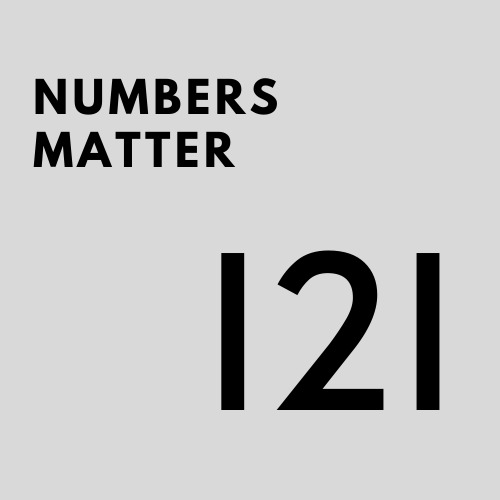
NUMBERS MATTER 121
チハルMK 、 おたこ、 川畑優、 AGF、 日野繭子、 大西蘭子
Thursday 22 October – 9pm (UK time) | Free
IKLECTIK YouTube Channel: https://youtu.be/HXFmH46kVEQ
Why numbers matter: Japan, a country with a population of over 124.2 million, is ranked at 121 in the Gender Inequality Index (GII) published by Human Development Reports 2020. Japanese women got the vote in 1946 – earlier than China (1949), Liechtenstein (1984) and Switzerland (1993).
In the ranking chart of the Global Gender Gap 2020, the top ten reads as follows: 1: Iceland; 2: Norway; 3: Finland; 4: Sweden; 5: Nicaragua; 6: New Zealand; 7: Ireland; 8: Spain; 9: Rwanda; 10: Germany. The UK ranked 21, following Albania at number 20. Though Japan falls some 100 places behind the UK, the latter’s ranking at 21 is nothing to be proud of either. Clearly there is plenty of work to be done in both countries. Hence, NUMBERS MATTER 121 features four special projects led by Japanese women: Chiharu MK, Otaco, Yu Kawabata (in collaboration with German poemproducer AGF) and Mayuko Hino.
Footnote: In the Press Freedom Index published in 2020, Japan and the UK don’t fare much better than in the GII. Out of 180 countries listed, the UK is ranked at 33 and Japan at 66. The countries listed from one to ten are as follows: Norway, Finland, Denmark, the Netherlands, Jamaica, Costa Rica, Switzerland, New Zealand, Portugal and Germany.
Programme:
“Paramnesia 2020” by CHIHARU MK “Tomodachi” by OTACO “Hamaderea Park ” by YU KAWABATA (sound) + AGF (visuals) “Toyosu 2020″ by MAYUKO HINO

Chiharu MK is from Sapporo. Primarily trained as a composer, she studied the acousmonium, that is, the sound diffusion system, at INA-GRM studio in Paris. Since completing her studies in 2002, she has become an internationally recognised electroacoustic sound artist, either performing or creating sound installations for festival, gallery or non-concert hall spaces in Europe, Hong Kong and Japan. For Intersect 2015, she commissioned the non-Japanese artists Francisco López, Sogar and Taylor Deupree to compose sounds for a 17.1 multi Channel Speaker System (consisting of seven speakers + ten screen speakers + one woofer) in Sapporo city centre’s underground walkway. Chiharu MK has also released three solo CDs: https://www.studio-cplus.net/
Chiharu MK’s new multimedia work Paramnesia 2020 is based on her original piece for Hong Kong Art Centre’s 40th anniversary multi-channel Sound Forms festival in 2018.
This film shows her performing the piece inside Glass Pyramid, nicknamed Hidamari – Japanese for Sunny Spot, it’s the centrepiece of Sapporo’s Moerenuma Park, designed by Japanese American sculptor Isamu Noguchi (1904–1988). Construction work on the park actually began in the year Noguchi died, and it opened in 2005. The film also shows Chiharu MK recording on Ishikari beach, just north of Sapporo.

Taking her name from tako, the Japanese word for octopus, Otaco is originally from Japan’s northernmost main island Hokkaido. An electronic musician and vocalist, Otaco is one of the most vibrant and engaging performers to emerge from the alternative music scene anywhere in Japan.
Now living in Tokyo, she operates a home studio set-up of a rhythm box with a synthesizer; she samples and syncs sounds into a computer, running them into real-time sequences to construct her outre pop-electronica songs and instrumentals. Her music can be heard at https://otacosan.bandcamp.com/music. Otaco also plays guitar when she leads Gotou, an occasional rock trio formed out of homage to early 1980s West Berlin groups Mania D and Malaria!. She appeared for the first time in the UK during Coding In GE 2018 festival for women and technology.

Antye Greie also know as AGF was born and raised in East Germany. She is a vocalist, digital songwriter, producer, performer, e-poet, calligrapher, digital media artist. In the last decade Greie has released more than 20 full length records and played over 300 live performances worldwide. AGF runs her own production company AGF Production – http://antyegreie.com She first worked with Yu Kawabata on her 2015 album A Deep Mysterious Tone, the third in AGF’s series of settings and poetry interpretations from different countries, this one featuring Japanese poets and writers including Noe Ito, Fumiko Kaneko, Shikubu Izumi, Blue Stocking editor and writer Hiratsuka Raicho, and more.
Yu Kawabata is a techno DJ active in Japan and Russia. This is Yu and AGF’s second collaboration. On their first, AGF set to music Yu’s reading of a waka poem, written by the 12th century court lady Yūshi Naishinnō-ke no Kii, enumerated as one of the Thirty-Six Female Immortals of Poetry. On their latest, Yu has created new music for a film by AGF. https://soundcloud.com/yukawabata

Since resuming music in 2011 after a ten year break to study Chinese medicine, Mayuko Hino has reclaimed her status as queen of noise.
A prolific live performer, Hino is best known for C.C.C.C. (Cosmic Coincidence Control Center), the group she formed in 1990 with Hiroshi Hasegawa, Fumio Kosakai and Ryuichi Nagakubo. In their early phase, the band grabbed attention by combining noise music with Hino’s sadomasochism performances using bondage ropes and dripping candle wax. Hino has since been a member of Mne-Mic, DFH-M3 and her most recent group Transparentz with Akira Sakata, who split up in January 2020.
Whether solo or in her various group projects, Hino experiments with the function of noise music as a transdisciplinary medium, in the process to breaking the boundaries surrounding performance art: urban structure against man, art against non art, activity versus rest.
In 2018 Mayuko Hino performed at Iklectic’s Coding In GE Festival alongside and in collaboration with Ramleh. The same year she released her second solo album Lunisolar. In addition to self-made instruments, Hino plays noise with her six-theremin oscillators (in bright pink), a unique device specially made for her by Ryo Araishi (aka ichion)
This year Hino had planned to resume activities with C.C.C.C. to mark the US reissue of their first four albums, but unfortunately their plans had to be put on hold because of the pandemic.
“There’s a sense of momentum to be found in Hino’s noise; it’s rarely static… At the hands of Hino it seems astral travelling is as much out-of-this-world as it is an out-of-body experience… on Lunisolar she continues with the ever evolving atmospheric and psychedelic sound that energised the noise of C.C.C.C.” (Compulsion Online)
“Hino Mayuko makes no bones about her wide-ranging noisician flexibility here, nor her honored place in the contemporary Japanoise scene… Unlike a bevy of artists who just make ear-splitting sonic somersaults, Hino’s sound is more impressionistic and staggered in its delivery, incorporating a yin/yang of the industrial and environmental.” (Tone-Shift)
RANKO ONISHI (Mne-mic): voice
Performing artist Ranko Onishi was born in Hokkaido. She moved to Tokyo where she joined Shuji Terayama’s Tenjo Sajiki theatre company in 1980. She was a second year student of dancer Min Tanaka in 1982 and became a full member of Tanaka’s company in 1984. Five years later in 1989 she performed with Keiji Haino. She and Hino work together in the duo Mne-mic, featuring Hino on electronics, Theremin and synthesizer, and Onishi on voice, water and fogphone. Their album Gulf Stream was released by Alchemy Records in 1999.
Curator Keiko Yoshida’s notes for NUMBERS MATTER 121
While researching texts for AGF’s 2015 CD A Deep Mysterious Tone I developed a profound interest in women’s history in Japan. AGF and I first met and begain talking about her project while she was taking part in my hometown Sapporo’s International Arts Festival in 2014. For the album she compiled and set to music Japanese writings and poems from the ninth century to the present day, and commissioned the female electronic musicians Ryoko Akama (UK), Kyoka (Germany), Tujiko Noriko (France) and Yu Kawabata to read her selections. She had met them at European festivals, and as she got to know them she learnt these female electronic musicians are not treated very well when they’re back home in Japan.
Indeed NUMBERS MATTER 121 took seed in these discussions on women and Japan with AGF. In some ways it’s also a sequel to “Coding in GE”, the 2018 Iklectik festival offering a platform to female electronic musicians, for which we got funding from Sasakawa Foundation UK, and in which Otaco, Mayuko Hino and AGF participated.
Another question addressed in NUMBERS MATTER 121 is the subject of decentralisation. I consciously asked musicians from outside Tokyo to participate in this project.
Currently working on a photo story book about 1980s London and Berlin.
Please support the project buying an e-ticket (#nameyourprice). ** https://buytickets.at/iklectik/439711 **
2 notes
·
View notes
Text
Afrika Bambaataa
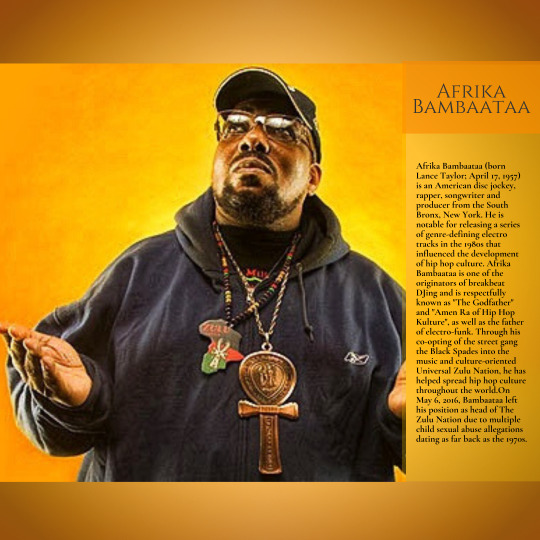
Afrika Bambaataa (born Lance Taylor; April 17, 1957) is an American disc jockey, rapper, songwriter and producer from the South Bronx, New York. He is notable for releasing a series of genre-defining electro tracks in the 1980s that influenced the development of hip hop culture. Afrika Bambaataa is one of the originators of breakbeat DJing and is respectfully known as "The Godfather" and "Amen Ra of Hip Hop Kulture", as well as the father of electro-funk. Through his co-opting of the street gang the Black Spades into the music and culture-oriented Universal Zulu Nation, he has helped spread hip hop culture throughout the world.On May 6, 2016, Bambaataa left his position as head of The Zulu Nation due to multiple child sexual abuse allegations dating as far back as the 1970s.
Early life
Born as Lance Taylor to Jamaican and Barbadian immigrants, Bambaataa grew up in The Bronx River Projects, with an activist mother and uncle. As a child, he was exposed to the black liberation movement, and witnessed debates between his mother and uncle regarding the conflicting ideologies in the movement. He was exposed to his mother's extensive and eclectic record collection. Gangs in the area became the law, clearing their turf of drug dealers, assisting with community health programs and both fighting and partying to keep members and turf. Bambaataa was a member of the Black Spades. He quickly rose to the position of warlord of one of the divisions. As warlord, it was his job to build ranks and expand the turf of the young Spades. He was not afraid to cross turfs to forge relationships with other gang members, and with other gangs. As a result, the Spades became the biggest gang in the city in terms of both membership and turf.
After Bambaataa won an essay contest that earned him a trip to Africa, his worldview shifted. He had seen the movie Zulu and was impressed with the solidarity exhibited by the Zulu in that film. During his trip to Africa, the communities he visited inspired him to create one in his own neighborhood. He changed his name to Afrika Bambaataa Aasim, adopting the name of the Zulu chief Bhambatha, who led an armed rebellion against unfair economic practices in early 20th century South Africa. He told people that his name was Zulu for "affectionate leader." Bambaataa formed The "Bronx River Organization" as an alternative to the Black Spades.
Career
Inspired by DJ Kool Herc and Kool DJ Dee, Bambaataa began hosting hip-hop parties beginning in 1977. He vowed to use hip-hop to draw angry kids out of gangs and form the Universal Zulu Nation. Robert Keith Wiggins, a.k.a. "Cowboy" of Grandmaster Flash and the Furious Five, is credited with naming hip-hop; the term became a common phrase used by MCs as part of a scat-inspired style of rhyming. Writer Steven Hager claims that the first time "hip-hop" was used in print was in his Village Voice article where he was quoting Bambaataa, who had called the culture "hip-hop" in an interview.
In 1982, Bambaataa and his followers - a group of dancers, artists, and DJs - went outside the United States on the first hip-hop tour. He saw that the hip hop tours would be the key to help expand hip hop and his Universal Zulu Nation. In addition it would help promote the values of hip hop that he believed are based on peace, unity, love, and having fun. He brought peace to the gangs; many artists and gang members say that "hip hop saved a lot of lives." His influence inspired many overseas artists like the French rapper MC Solaar. He was a popular DJ in The South Bronx rap scene and became known not only as Afrika Bambaataa but also as the "Master of Records." He established two rap crews: the Jazzy 5 including MCs Master Ice, Mr. Freeze, Master Bee, Master D.E.E, and AJ Les, and the second crew referred to as Soulsonic Force including Mr. Biggs, Pow Wow and Emcee G.L.O.B.E.
In 1982, Taylor, who was inspired by Kraftwerk's futuristic electronic music, debuted at The Roxy a test cassette of EBN-OZN's ground breaking, 12-inch white rap/spoken word "AEIOU Sometimes Y". It was the first commercially released American single ever made on a computer, a Fairlight CMI, ushering in the era of music computer sampling. In that same year, Bambaataa and Soulsonic Force stopped performing with a live band, and began to use only technology. Bambaataa credited the pioneering Japanese electropop group Yellow Magic Orchestra, whose work he sampled, as an inspiration. He also borrowed a keyboard hook from German electronic pioneers Kraftwerk and was provided the electronic Roland TR-808 "beat-box" by producer Arthur Baker and synthesizer player John Robie. That resulted in "Planet Rock," which went to gold status and generated an entire school of "electro-boogie" rap and dance music. Bambaataa formed his own label to release the Time Zone Compilation. He created "turntablism" as its own subgenre and the ratification of "electronica" as an industry-certified trend in the late 1990s.
Birth of the Zulu Nation
In the late 1970s, Bambaataa formed what became known as the Universal Zulu Nation, a group of socially and politically aware rappers, B-boys, graffiti artists and other people involved in hip hop culture. By 1977, inspired by DJ Kool Herc and DJ Dee, and after Disco King Mario loaned him his first equipment, Bambaataa began organizing block parties all around The South Bronx. He even faced his long-time friend, Disco King Mario in a DJ battle. He then began performing at Adlai E. Stevenson High School and formed the Bronx River Organization, then later simply "The Organization." Bambaataa had deejayed with his own sound system at The Bronx River Houses' Community Center, with Mr. Biggs, Queen Kenya, and Cowboy, who accompanied him in performances in the community. Because of his prior status in the Black Spades, he already had an established Army party crowd drawn from former members of the gang. Hip hop culture was spreading through the streets via house parties, block parties, gym dances and mix tapes.
About a year later Bambaataa reformed the group, calling it the Zulu Nation (inspired by his wide studies on African history at the time). Specifically, Bambaataa watched the 1964 film Zulu, which sparked the name for the group. Five b-boys (break dancers) joined him, whom he called the Zulu Kings, and later formed the Zulu Queens, and the Shaka Zulu Kings and Queens. As he continued deejaying, more DJs, rappers, b-boys, b-girls, graffiti writers, and artists followed him, and he took them under his wing and made them all members of his Zulu Nation. He was also the founder of the Soulsonic Force, which originally consisted of approximately 20 Zulu Nation members: Mr. Biggs, Queen Kenya, DJ Cowboy Soulsonic Force (#2), Pow Wow, G.L.0.B.E. (creator of the "MC popping" rap style), DJ Jazzy Jay, Cosmic Force, Queen Lisa Lee, Prince Ikey C, Ice Ice (#1), Chubby Chub; Jazzy Five-DJ Jazzy Jay, Mr. Freeze, Master D.E.E., Kool DJ Red Alert, Sundance, Ice Ice (#2), Charlie Choo, Master Bee, Busy Bee Starski, Akbar (Lil Starski), and Raheim. The personnel for the Soulsonic Force were groups within groups with whom he would perform and make records.
In 1980, Taylor's groups made Death Mix, their first recording with Paul Winley Records. According to Bambaata, this was an unauthorized release. Winley recorded two versions of Soulsonic Force's landmark single, "Zulu Nation Throwdown," with authorization from the musicians. Disappointed with the results of the single, Bambaataa left the company. The arranger credit on these recordings is correctly attributed to Harlem Underground Band leader, Kevin Donovan. This led to the false assumption that Bambaataa's real name was Kevin Donovan, which was widely accepted by the hip hop community until recently, following sexual abuse allegations, when Bronx River residents spoke out and revealed in oral testimonies that Bambaataa's real name was in fact Lance Taylor.
The Zulu Nation was the first hip-hop organization, with an official birth date of November 12, 1977. Bambaataa's plan with the Universal Zulu Nation was to build a movement out of the creativity of a new generation of outcast youths with an authentic, liberating worldview.
Recognition
In 1981, hip hop artist Fab Five Freddy was putting together music packages in the largely white downtown Manhattan new wave clubs, and invited Bambaataa to perform at one of them, the Mudd Club. It was the first time Bambaataa had performed before a predominantly white crowd. Attendance for his parties downtown became so large that he had to move to larger venues, first to the Ritz, in a show organized by hip hop pioneer, Michael Holman, with Malcolm McLaren's group Bow Wow Wow, then to the Peppermint Lounge, The Jefferson, Negril, Danceteria and the Roxy. "Planet Rock," a popular single produced by Arthur Baker and the keyboardist John Robie, came out that June under the name Afrika Bambaataa and the Soulsonic Force. The song borrowed musical motifs from German electronic music, funk, and rock. Different elements and musical styles were used together. The song became an immediate hit and stormed the music charts worldwide. The song melded the main melody from Kraftwerk's "Trans-Europe Express" with electronic beats based on their track "Numbers" as well as portions from records by Babe Ruth and Captain Sky, thus creating a new style of music altogether, electro funk.
Afrika Bambaataa was booked on the first ever European hip hop tour presented by Europe One and Fnac France. Along with himself were rapper and graffiti artist Rammellzee, Zulu Nation DJ Grand Mixer DXT (formerly Grand Mixer D.St), B-boy and B-girl crews the Rock Steady Crew, and the Double Dutch Girls, as well as legendary graffiti artists Fab 5 Freddy, PHASE 2, Futura 2000, and Dondi.
Bambaataa's second release around 1983 was "Looking for the Perfect Beat," then later, "Renegades of Funk," both with the same Soulsonic Force. He began working with producer Bill Laswell at Jean Karakos's Celluloid Records, where he developed and placed two groups on the label: Time Zone and Shango. Bambaataa recorded "Wildstyle" with Time Zone, and he recorded a collaboration with punk rocker John Lydon and Time Zone in 1984, titled "World Destruction." Shango's album, Shango Funk Theology, was released by the label in 1984. That same year, Bambaataa and other hip hop celebrities appeared in the movie Beat Street. He also made a landmark recording with James Brown, titled "Unity." It was billed in music industry circles as "the Godfather of Soul meets the Godfather of Hip Hop."
Around October 1985, Bambaataa and other music stars worked on the anti-apartheid album Sun City with Little Steven Van Zandt, Joey Ramone, Run–D.M.C., Lou Reed, U2, and others. During 1988, he recorded "Afrika Bambaataa and Family" for Capitol Records, titled The Light, featuring Nona Hendryx, UB40, Boy George, George Clinton, Bootsy Collins, and Yellowman. He had recorded a few other works with Family three years earlier, one titled "Funk You" in 1985, and the other titled "Beware (The Funk Is Everywhere)" in 1986. In 1986 he discovered an artist in Atlanta. (Through MC SHY D) by the name of Kenya Miler a.k.a. MC Harmony (Known producer now as Kenya Fame Flames Miller), that was later signed to Criminal Records and Arthur Baker. The group was Harmony and LG. The first single, 1987's "Dance To The Drums/No Joke," was produced by Bambaataa and Baker with musicians Keith LeBlanc and Doug Wimbish. Bambaataa was involved in the Stop the Violence Movement, and with other hip hop artists recorded "Self Destruction", a 12" single which hit number one on the Hot Rap Singles Chart in March 1989. The single went gold and raised $400,000 for the National Urban League to be used for community anti-violence education programs.
In 1990, Bambaataa made Life magazine's "Most Important Americans of the 20th Century" issue. He was also involved in the anti-apartheid work "Hip Hop Artists Against Apartheid" for Warlock Records. He teamed with the Jungle Brothers to record the album Return to Planet Rock (The Second Coming).
Gee Street Records, Bambaataa and John Baker organized a concert at Wembley Stadium in London in 1990 for the African National Congress (ANC), in honor of Nelson Mandela's release from prison. The concert brought together performances by British and American rappers, and also introduced both Nelson and Winnie Mandela and the ANC to hip hop audiences. In relation to the event, the recording Ndodemnyama (Free South Africa) helped raise approximately $30,000 for the ANC.
From the mid-1990s, Bambaataa returned to his electro roots. In 1998, he produced a remix of "Planet Rock" combining electro and house music elements, called "Planet Rock '98," which is regarded as an early example of the electro house genre. In 2000, Rage Against the Machine covered his song "Renegades of Funk" for their album, Renegades. The same year, he collaborated with Leftfield on the song "Afrika Shox," the first single from Leftfield's Rhythm and Stealth. "Afrika Shox" also appeared on soundtrack to Vanilla Sky. In 2004, he collaborated with WestBam, a group that was named after him, on the 2004 album Dark Matter Moving at the Speed of Light which also featured Gary Numan. In 2006, he was featured on the British singer Jamelia's album Walk With Me on a song called "Do Me Right," and on Mekon's album Some Thing Came Up, on the track "D-Funktional." He performed the lyrics on the track "Is There Anybody Out There" by The Bassheads (Desa Basshead). As an actor, he has played a variety of voice-over character roles on Kung Faux.
Bambaataa was a judge for the 6th annual Independent Music Awards to support independent artists' careers. On September 27, 2007, it was announced that Afrika Bambaataa was one of the nine nominees for the 2008 Rock and Roll Hall of Fame Inductions. On December 22, 2007, he made a surprise appearance performing at the First Annual Tribute Fit For the King of King Records, Mr. Dynamite James Brown in Covington, Kentucky.
On August 14, 2012, Bambaataa was given a three-year appointment as a visiting scholar at Cornell University. The appointment was made in collaboration between Cornell University Library's Hip Hop Collection, the largest collection of historical hip hop music in North America, and the University's department of Music. His archives, including his vinyl collection, original audio and video recordings, manuscripts, books, and papers arrived at the Cornell University Hip Hop Collection in December 2013.
Child molestation allegations
In April 2016, Bronx political activist Ronald Savage accused Bambaataa of molesting him in 1980, when Savage was 15. Following Savage's allegations, three more men accused Bambaataa of sexual abuse. Bambaataa issued a statement to Rolling Stone denying the allegations. In early May 2016, the Universal Zulu Nation disassociated themselves from Bambaataa as part of an organizational restructuring that saw the group removing "all accused parties and those accused of covering up the current allegations of child molestation" from their current roles in the organization.
On May 6, 2016, Bambaataa left his position as head of The Zulu Nation.
In June 2016, The Universal Zulu Nation issued an open letter apologizing to the alleged victims of sexual abuse perpetrated by Bambaataa.
"On behalf of the members of the Universal Zulu Nation worldwide, who have made their voices heard through their chapter leaders, we extend our deepest and most sincere apologies to the many people who have been hurt by the actions of Afrika Bambaataa and the subsequent poor response of our organization to allegations levelled against him," the Zulu Nation said in a statement signed by dozens of UZN chapter leaders worldwide.
"To the survivors of apparent sexual molestation by Bambaataa, both those who have come forward and others who have not, we are sorry for what you endured and extend our thanks to those who have spoken out for your bravery in bringing to light that which most of us were sadly unaware of, and others chose not to disclose."
The apology was signed by nearly three dozen members of the Zulu Nation, including leaders from as far as New Zealand. The organization also apologized to Ronald "Bee Stinger" Savage and Hassan "Poppy" Campbell, two of Bambaataa's accusers, who they said were "subjected to unjust and inexcusable attacks on their characters in official statements by our organization when they chose to speak their truths. ... We hear you, we believe you, and we stand with you."
In October 2016, Vice published an in-depth article titled "Afrika Bambaataa Allegedly Molested Young Men For Decades" and reported the stories and testimonies of the alleged victims and witnesses. The article stated the accusers "claim that these accounts of alleged abuse have been common knowledge in the Bronx River community and beyond since the early 1980s, including among many of Bambaataa's closest friends and Zulu soldiers."
Despite the multiple allegations and testimonies of victims and witnesses, to date no charges have been brought upon Afrika Bambaataa and he has not been prosecuted for these alleged crimes. This is due to New York state statute of limitations, which provide that actions for civil damages for defined sexual crimes, including sexual abuse of a minor, must be brought within five years of the acts constituting the sexual offense.
7 notes
·
View notes
Text
Post-petroleum futures
Several months ago Crap Futures gave a talk at the Center for Contemporary Theory (3CT) at the University of Chicago. The theme provided some good inspiration for new thinking on the state of design. Now, at the dawn of the new decade, we’ve finally got around to sharing some of these thoughts in blog form, many cups of coffee and plates of toast later.
For obvious reasons, there are many discussions at the moment asking: ‘What comes after petroleum?’ Before getting into this, it might be helpful to better understand the promise of petrol – what were the origins of petroleum utopias? Who was responsible for them? And what agendas were hidden behind the progressivist imaginaries?
So, starting with petroleum (and related materials): this naturally occurring liquid is essentially a battery, which stores a fragment of the solar energy that reached the earth during the Jurassic and Cretaceous periods (typically via algae and woody plants). While the first recorded use of petroleum can be found 4,000 years ago when natural asphalt was used in the walls and towers of Babylon, it wasn’t until the early 20th Century that its potential, as a useful form of energy, began to exert its influence on so many and diverse aspects of human life.
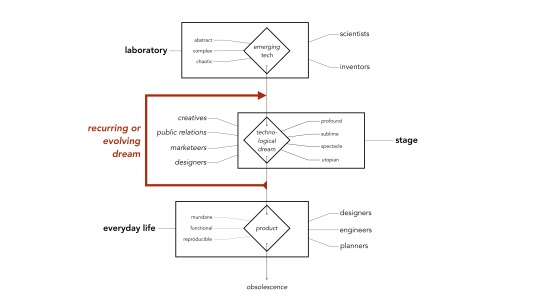
This diagram (which appeared in a previous post) describes the fairly typical journey a technology makes, starting from its genesis as an emerging technology in the laboratory. Next is the technological dream phase in which the potential of the emerging technology is translated into techno-utopian imaginaries – intended by both corporations and politicians to sell particular agendas to the public audience. Designers love this phase, as the constraints that apply to the design of normal products do not yet exist. The last phase is the transition of aspects of the dream into real products in everyday life – and this of course means the implementation of all the infrastructure necessary to allow them to function. Finally the product descends into obsolescence, as it is replaced by more advanced iterations. Or else the dream gets recycled or regurgitated; updated with the latest technology.
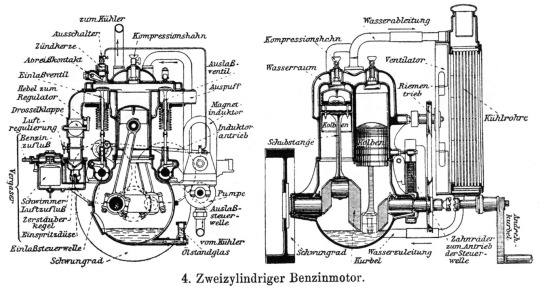
Applying this journey to petroleum – the new machines of the late 19th and early 20th Century, such as the internal combustion engine or the coal-powered steam generator – revealed for the first time the true potential of petroleum. In a split-second its energy, captured during the time when dinosaurs roamed the Earth, could be magically transformed into heat, noise and more importantly movement! Lots and lots of movement – think of the Italian Futurists in 1909, championing ‘a new beauty: the beauty of speed’ – ‘a roaring car … more beautiful than the Victory of Samothrace’ – a new perspective on time and space that comes to symbolise modernity in all its thrilling, dynamic and destructive power.
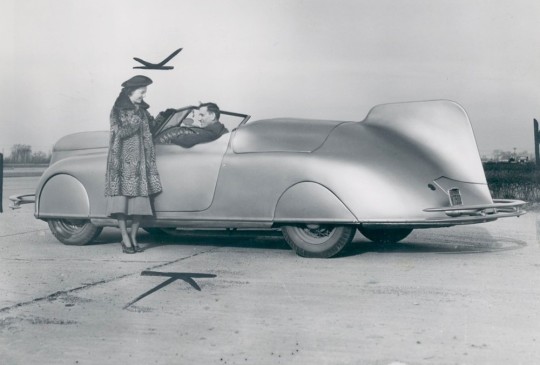
The aeroplanes, automobiles and ships that were built around these engines also became the symbols of the new machine age, as extrapolations of the potential of the internal combustion engine fed the utopian imaginaries of the near future.
For a country emerging out of the despair of the Great Depression, Streamline Moderne (as it became known) represented the American dream of freedom and escape – both in the physical sense, through the action of the engine, and in the metaphorical sense, through the sleek teardrop styling that gave the impression that the object was moving – even when standing still. Designers, meanwhile, were for the first time beginning to play an instrumental role in linking technological progress to the notion of a better future – all in the service of American corporate capitalism …
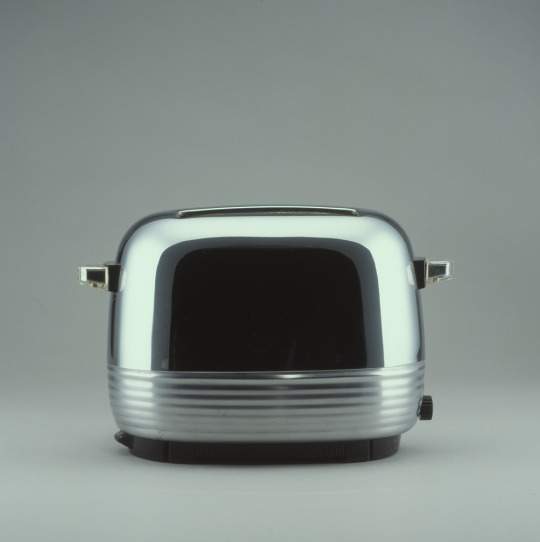
… and in turn inspiring the design of the new wave of domestic products – toasters! radios! televisions! washing machines! – that would give consumers a sense of buying into, and thus belonging in, that utopian American dream.

Nothing exemplifies this period of techno-optimism better than Futurama, General Motors’ exhibit at the 1939 New York World Fair. This described a further extrapolation of the potential of petroleum - outwards across time and space. Designed by Norman Bel Geddes, the 35,000-square foot interactive exhibition presented a version of the United States set 20 years in the future, with sprawling superhighways connecting the major cities and facilitating the growth of suburbia as commuters escaped from the claustrophobia of urban life.
E. L. Doctorow’s 1985 novel World’s Fair is revealing in its dramatisation of events, as it connects the key players who, behind the scenes, write the scripts for such techno-utopian futures. In this excerpt a family are leaving Futurama when the child asks his father for his opinion. The father replies:

Of course the roads were built and many cars were sold, but with the benefit of hindsight it is obvious that the Futurama was no utopia. For consumers, however, the dream kept evolving.

In the 1950s the jet engine allowed for super-sonic flight, expanding the horizons and moving the utopian visions upwards and into the ‘final frontier’ (note the colonising terminology) of space.
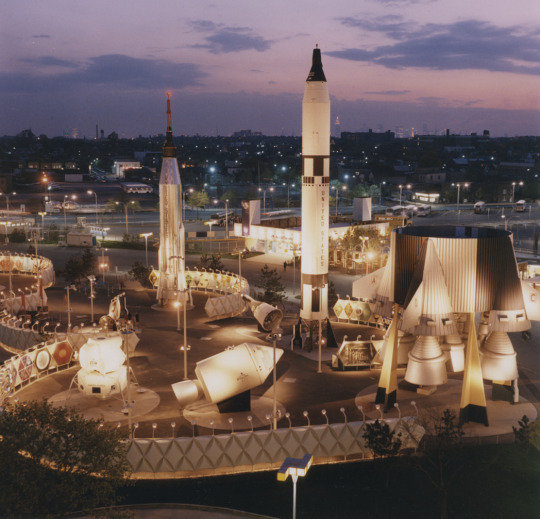
Another famous world’s fair took place 25 years later using the very same venue – Flushing Meadows in Queens, in 1964. It represents the final extrapolation of petroleum utopias – within a few years they were exhausted. As the novelist J. G. Ballard observed in a 1979 interview with Penthouse magazine:
‘The world of "Outer Space", which had hitherto been assumed to be limitless, was being revealed as essentially limited, a vast concourse of essentially similar stars and planets whose exploration was likely to be not only extremely difficult, but also perhaps intrinsically disappointing. … The number of astronauts who have gone into orbit after the expenditure of this great ocean of rocket fuel is small to the point of being ludicrous. And that sums it all up. You can't have a real space age from which 99.999 per cent of the human race is excluded.’
Elsewhere at the same expo, however, a new genesis was being revealed - introducing a refreshingly new direction for technological futures.
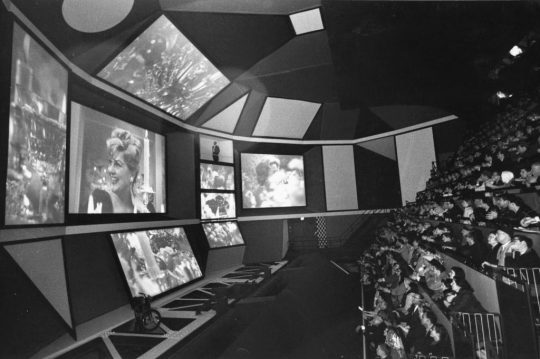
The IBM Pavilion, with exhibition design and a film presentation by Charles and Ray Eames and architecture by Eero Saarinen, introduced visitors to the computer and its place in mainstream contemporary life. Again quoting Ballard:
‘The ability to pass information around from one point in the globe to another in vast quantities and at stupendous speeds, the ability to process information by fantastically powerful computers, the intrusion of electronic data processing in whatever form into all our lives is far, far more significant than all the rocket launches, all the planetary probes, every footprint or tyre mark on the lunar surface.’
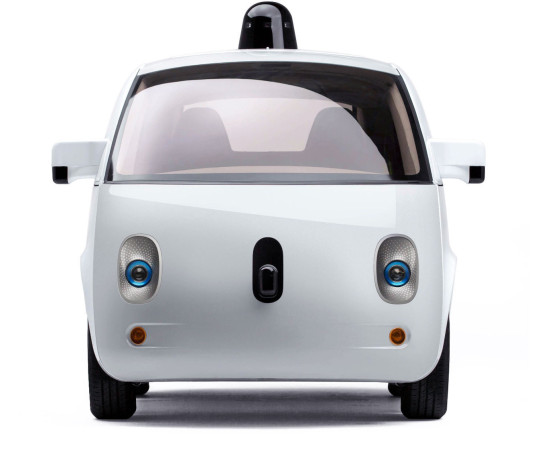
Jumping forward to the present and the corporate dreams of today – very well encapsulated by Google’s self-driving car – it becomes apparent that little has changed in terms of strategy: government and corporations in collusion, shaping the technological future on our behalf, with largely the same agendas. At the forefront are a few leading designers whose role hasn’t for the most part evolved much since the days of Norman Bel Geddes.
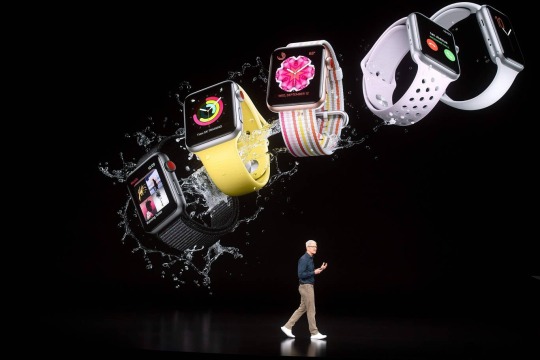
Here are a few key observations on why visions of the future have stagnated or are simply not appropriate for the world of the 21st Century:
1. Those responsible for the creation of future visions are guilty of being overly optimistic – never acknowledging the possible negative implications.

2. Those responsible for the creation of these visions are guilty of being overly simplistic – perfect worlds, perfect people, interacting perfectly, thus negating the complex and messy reality of human lives.
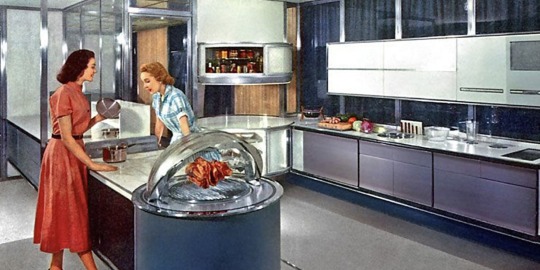
3. The reduction of future visions into objects of desire has resulted in the dislocation of means and ends – the systems that facilitate the function of products have become largely invisible and intangible.

4. The reduction of visions into objects of desire leads to an increased instrumentalisation of operation and banal iterative development.

5. The emergent technologies that are extrapolated into today’s utopian visions (IoT, AI, nanotech, etc.) tend to act in the background, at intangible scales, or in complex languages – meaning that the resultant futures are difficult to convey (and sell).

6. Corporate imagination that informs future visions is frequently underwhelming – merely updating, through the application of emergent technologies, the pursuit of ancient human obsessions (artificial life, immortality, flight, automation).
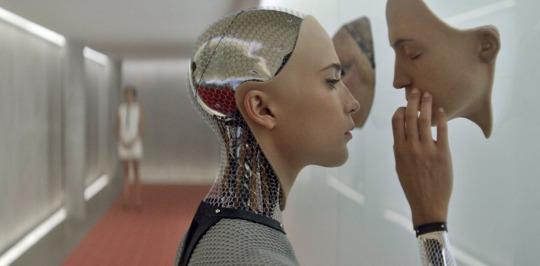
7. Finally, many of the metrics through which we evaluate future imaginaries remain the same as those from the machine age – faster, more efficient, more automated – and as such are wholly inadequate for addressing the complex problems we face today.
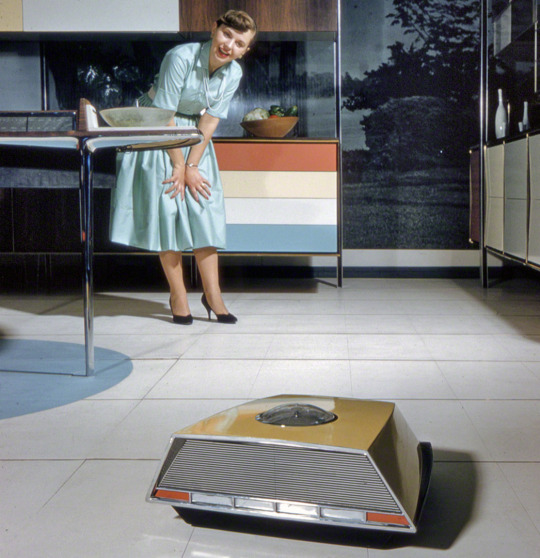
7 notes
·
View notes
Photo

Folk Horror Revival: Urban Wyrd – 1. Spirits of Time, edited by Richard Hing, Grey Malkin, Stuart Silver and Andy Paciorek, Wyrd Harvest Press, 2019. Cover art by Grey Malkin, frontispiece by Andy Paciorek, back cover by Jim Peters, info: folkhorrorrevival.com.
Welcome to the Urban Wyrd. Discover Hauntology, Weird Technology & Transport, Hauntings and much much more in the realms of TV, Film, Literature, Art, Culture , Lore and Life. Travel in time and spaces with Adam Scovell, Stephen Volk, Scarfolk, Julianne Regan, Sebastian Backziewicz, Sara Hannant, The Black Meadow and many other contributors. All sales profits from this book purchased from our Lulu bookstore are donated at intervals to The Wildlife Trusts.
Contents: Time: A Foreword Urban Wyrd: An Introduction by Adam Scovell Spectral Echoes: Hauntology's Recurring Themes & Unsettled Landscapes by Stephen Prince Quatermass and the Pit: Unearthing Archetypes at Hobb's End by Grey Malkin The Haunted Generation: An Interview with Bob Fisher On a Thousand Walls: The Urban Wyrd in Candyman by Howard David Ingham Protect and Survive: Dystopian Drama – A Jolly British Apocalypse by Andy Paciorek Back to the Countryside: Urban Witchcraft by Darren Charles The Bad Wires: Reflections on The Changes by Grey Malkin The Hands of Doom: A Short Perspective on Divine Intervention by Leah Crowley Sir Arthur Conan Doyle: The Adventure of the Spiritualist Missionary by Jim Peters A Tandem Effect: Ghostwatch by Jim Moon An Interview with Stephen Volk The Last Key That Unlocks Everything: Ghost Stories by Andy Paciorek A Very Urban Haunting: The Echo of Noisy Spirits by Jim Peters The Cookstown Ghost: Poltergeist Phenomenon in Urban Ulster in the 19th Century by Jodie Shevlin These Houses Are Haunted: Supernatural Dwellings in Film by Andy Paciorek The Photography by Carmit Kodrov Wyrd Technology by Andy Paciorek Voices of the Ether: Stone Tapes, Electronic Voices and Other Ghosts by James Riley Video nasty: Moving Image in The Ring and Sinister by Andy Paciorek An Interview with Richard Littler – Major of Scarfolk The World Falling Apart: Jubilee by Stuart Silver Doll Parts: Marwencol by Andy Paciorek Chocky: The Haunting of Matthew Gore by Grey Malkin The Sun on My Face: Deon Seed by Andy Paciorek The Photography by Sara Hannant A Hive Mind: Phase IV by Andy Paciorek Wired for Sound: The Auditory in Horror by Andy Paciorek "We Want You to Believe In Us, But Not Too Much": UFOs and Folklore by S.J. Lyall A Space Flower: Invasion of the Body Snatchers by Andy Paciorek Under the Skin of the Man Who Fell To Earth by Andy Paciorek Silent Invasions by S.J. Lyall I Am Not A Number: The Prisoner by Stuart Silver All For the Hunting Ground: Wolfen by S.J. Lyall Reclaiming the "f" word: A conversation between The Black Meadow's Chris Lambert and Pilgrim's Sebastioan Baczkiewicz Sounds from a Haunted Ballroom: The Caretaker by Andy Paciorek Uncanny Valley; Spielberg's A.I. by Damian Leslie Sounds and Visions: MKUltra, Number Stations, Hallucinogens and Psychological Experiments in Film by Andy Paciorek Concrete, Flesh, Metal, Blood: The Wolds of Ballard & Cronenberg by Andy Paciorek The Eternal Snicket by Professor Phillip Hull (From an interview with Chis Lambert) The Voice of Electronic Wonder: The Music of Urban Wyrd by Jim Peters Age of the Train: Rail and the Urban Wyrd by Andy Paciorek Mind the Doors: Death Line by S.J. Lyall Step Away From The Meat: The Midnight Meat Train by Andy Paciorek Evil Dream: Q The Winged Serpent by S.J. Lyall These Cities are Ours: Notable Kaiju in Cinema by Richard Hing Weird Rides: Taxis and Urban Uncertainty by William Redwood The Photography by Jackie Taylor "This isn't for Your Eyes" – The Waychers by Richard Hing The Whole World is on Fire: Years and Years by Andy Paciorek Nature and Machine: An Interview with Julianne Regan How Do the Dead Come Back, Mother? Psychomania by Andy Paciorek Urban Wyrd Biographies Wyrd Harvest Press
11 notes
·
View notes
Text
Back to the Travel Grind
Day 1, September 15 – Sofia, Bulgaria (8 hours in the city)
Dear reader, I’ve outlined 5 things that you must know before skipping to the juicy travel part:
I was asked to be a Texas Exes Tour Host for the “Grand Danube Cruise” with the Flying Longhorns and AHI (Group Travel Group established in 1962).
There were 28 Flying Longhorns (not including myself and guest). I was tasked with hanging out with them and making sure that they had a great time on their trip.
The official trip was from September 18 – October 3.
Travelers arrived in Sofia on September 19 and stayed at the Hotel Balkan. We then boarded the river cruise ship on September 21. After disembarkation, the group and tour directors stayed in a beautiful Art Deco style hotel named the Imperial Hotel in Prague for 3 days and 3 nights.
The trip started in Sofia, Bulgaria. We took a cruise ship from Vidin, Bulgaria and traversed the Danube River through 6 other countries: Romania, Serbia, Hungary, Slovakia, Austria, and Germany. After Germany, we were shuttled to Prague. In total, the Flying Longhorns trip took us through 8 countries!
For those who want to know how the Flying Longhorns trips work, I get 1 day to catch up on sleep. I returned to the office to get readjusted to the real world starting October 5.
I did not research much on Bulgaria before arrival. During the first two weeks of September, the Texas Exes Chapters & Networks team was very busy with our annual chapter and network leadership conference! We had about 100 volunteer leaders for our different chapters and networks converge on the Alumni Center for a day of learning, conversation, and fun!
My guest on the trip was Tyler Draker, professional boyfriend and photographer.
Tyler and I made the decision to arrive in Sofia 4 days before the travelers to go explore Istanbul for 3 days.
Months before the trip, I discovered that there is an overnight express train from Sofia to Istanbul. The website said it would take about 10 hours to get to Istanbul. There wasn’t much information from what I could find… maybe the key words I used weren’t the most helpful. Regardless, I found YouTube Vlogs of people taking the train and giving a very quick tour of the small sleeper cabin on the overnight express. Travelers made sure to emphasize that there would be no food served on the train. I also read blogs and used the Girls Who Travel Facebook Group to determine that the overnight train stops in Halkali Station (a suburb) and then there’s a shuttle bus that takes passengers to the central station, free of charge.
We touched down in Sofia, Bulgaria about 1:30 pm on Saturday. The first hour and a half was spent getting our bags, changing into things that didn’t smell like other people’s (ok… admittedly ours too…) pungent body odor, orienting ourselves to the metro and how to get to the central train station, and discerning how many Bulgarian Lev equal the American Dollar. For those interested, on September 15, it was 1.68 Lev to 1 Dollar. Five days later, we learned from our local tour guide, Boris (aka Bobby), that Bulgaria has until 2024 to switch to the Euro. As of now, Bobby says the country will most likely transition around 2021. When Bulgaria entered the European Union in 2004, they agreed that the country would transition to the Euro within 20 years.
Now back to the story: our first mission was to get to the Central Train Station to buy our tickets to Istanbul. There was no online purchase portal which is pretty normal. We took the metro at the airport to the train station. Here’s Sofia’s metro map. (Please note that Bulgarians use the Syrillic alphabet, but forturnately English is right below it! And with the August and September I had, I didn’t have too much time to take a Bulgarian language course).
We arrived at the train station about 30 minutes after leaving the airport. The first thing I noticed was that the station is big. There are 3 above ground and 2 underground levels. According to Wikipedia, an average 10,910 people pass through the station daily, as well as an average 166 trains (84 arriving and 82 departing). The station has 30 ticket offices and 5 electronic timetable displays. This Wikipedia article details more about the station.
When we arrived at the station, the first thing that captured my attention was the large statue that spanned the length of the 5 stories. It looked like something that was built during the Cold War. I tried to find as much information on the statue after the trip on the internet, and didn’t find much. So I’ll discuss what I felt - similar to a tall, gothic cathedral, it made you feel small. Was it built during the Cold War? Not sure.
Tyler and I dropped our bags at storage on the basement floor of the train station. There was a very kind woman working behind the counter. She held our bags for 4 hours for 2 lev each. Behind the counter, we saw her daughter and then her daughter’s daughter who wore a t-shirt and fairy wings. We then walked 2 kilometers (about 1.2 miles) where we crossed the Lion’s Bridge and proceeded to a 2 story market to get some dinner.
We ate a smorgasbord in the plaza square across the street from the market. We dined on a flank of fish, cucumber and tomato salad, and some heavily sautéed and soggy root veggies. At the edge of the plaza, we saw the Regional History Museum (check this 360 View of it!) and an active mosque named Banya Bashi that was built in the 16th Century during the Ottoman Empire. People walked around the square while enjoying the mid-September cool air. We walked around the area aimlessly, knowing we had to be back at the train station at 8:15 pm to buy the 2 person sleeper car to Istanbul.
We putzed around the train station between 8:15 and 9:13 pm. Around 9:05 pm, Tyler said that he was surprised that the express train was not at the platform. So he walked back about 200 yards to the departure monitors to look over the schedule again. Turns out... we had gone to the wrong platform. Stub 4 is not the same as Platform 4. About 9:09, I saw him walking back very quickly. I knew to grab my 70 liter backpack and get ready to walk quickly. With heavy bags in tow, we ran down a flight of stairs and then up a flight to the right platform and hopped on the train around 9:13.
Once we got our bearings on the train, we were pleasantly surprised. There were nice Turkish cabin attendants (all men) who brought us clean sheets, juice boxes, two packs of crackers, and some soap. The sleeper room had two single beds (one that was behind the couch and one that you pulled from the ceiling), sink, fridge, and a big window. The most defining feature was the track toilet. I can’t say that I have had this experience before, but let’s just say that I got a good, little quad workout. ;-)
The old train started firing up and moving down the tracks promptly at 9:16 pm. I knew that we would go through a passport check at the Bulgarian/Turkish border so I didn’t sleep too soundly between then and 2 am because I wanted to make sure I was coherent enough for the check. Around 2 am, Bulgarian border agents came onto the train to conduct their passport check. They took our passports, and then we waited about 30 minutes on the train. They then came back to our cabins to return the passports. Phase 2 of the border crossing was a passport check/face check in Kapikule, Turkey. This time, all passengers got off of the train to walk into a customs office about 2:45 am.
Per the suggestion of the Bulgarian Ticket Representative, we bought a one way ticket to Istanbul because buying a one way from Istanbul is slightly cheaper than buying a round trip from Sofia. The Turkish border agent reviewed our tickets, asked Tyler and me to take off our glasses, and then asked Tyler if he was going to stay in Istanbul (for an indeterminate amount of time). Tyler said “Yes.” The agent repeated himself. Tyler did too. That’s when I started to piece together that the agent was asking if Tyler was going to stay past the 90 day tourist period. I then said “No.” And then explained to Tyler that he was asking if we were going to be there for more than a month and a half. Talk about lost in translation. The entire border crossing took about 1.5 hours
We arrived at Halkali Train Station around 8 am and took a shuttle with two Turkish young men and all of the Turkish train attendants (the other shuttle was full) and arrived in the center of Istanbul an hour later. It was fun to listen to the Turkish chatter rather than listen to the silence of the tourists on the other, larger bus.
Don’t hold me to it, but I think I would take the overnight express again. A one way train ride to Istanbul cost approximately $40. We got a place to sleep, some tasty crackers, and a really nice view. 8.5/10 would do it again.
We departed from Austin Bergstrom International Airport at 10:50 am on Friday morning. After traveling a total of 39 hours, we arrived at Istanbul’s Central Train Station at 9:15 on Sunday morning.
1 note
·
View note
Text
how to make $4000 a week playing 비트게임 online #3498
Caribbean Draw Poker is another casino poker game played in much the same style as Caribbean Stud Poker except that there is an optional draw phase. After seeing his five cards, if the player decides to move on by placing a raise, they may either stand on their current hand or discard up to two cards. Any discarded cards are then replaced with new cards. https://en.search.wordpress.com/?src=organic&q=먹튀커뮤니티 Each space in the grid contains a number, except the middle square, which is designated a "Free" space. The rules contained in this division, together with the general rules contained in division 1, shall apply to the game of Caribbean stud poker.When the Progressive Jackpot is being operated electronically, the Caribbean stud poker table shall be fitted with electronic equipment which shall: This pays 176-for-1, for a house edge of 7.46%. For all three wagers, the order in which the numbers are hit does not matter. Whenever a seven is hit, including on the come out roll, all bonus bets lose, the bonus board is reset, and new bonus bets may be placed.
The player must specify otherwise if he or she wishes to have the bet not working. It is the ace/king hands that are tricky. In general it helps if the three singletons are high or the dealer's up card is jack or less and matches one of the player's cards (making is less likely the dealer will form a pair). I personally developed the following strategy, which results in a house edge of 5.225%, just 0.001% less than optimal. If that isn't enough for you I do have the Caribbean Stud optimal strategy. The little ball has no memory and can’t remember where it last landed. Each player shall be responsible for verifying that his or her respective progressive payout wager has been accepted.A "bet" wager shall be made in accordance with Section 10.A player shall not be permitted to play more than one hand per round of play.
The Chinese assert the longest pedigree for card playing (the “game of leaves” was played as early as the 9th century). Since 2002, the Atlantic Lottery Corporation has been fully responsible for all VLT operations in the province, rather than having their costs covered by private owner-operators. Each spin of the roulette wheel is independent of the spins that came before and has the same fifty-fifty chance of being red or black. Featuring Linked Progressive Jackpot To play, players make an Ante bet to compete against the dealer and an optional bonus bet to compete against the paytable and the progressive bet to compete for all of an incremental jackpot.
False Alarm or Just Practicing – Tongue-in-cheek term used when one calls bingo but is mistaken. If the Q of Clubs is the starter, any club may be played on it or any Queen. Also, during the game players are not allowed to talk or communicate in any way to the dealer or the other players about the hand. If they do so, they forfeit their wagers or the hand results in a “dead hand.” The best strategy to use in Caribbean Stud Poker is to play A-K, which reduces the casino edge in the game significantly. In order to play this strategy one of three situations need to occur. If the player loses, then the house gets both her ante and her bet. If there’s a tie, the player gets her ante and her bet back, but no winnings.If the dealer doesn’t qualify, then all the players who stayed in win. But there’s a catch, and it’s important. They only win their ante bet. The other bet is returned, but not paid off.
THREE OF A KIND — EXCHANGE TWO CARDS if Dealer's Up Card is different from your Trips. PLAY if Dealer's Up Card is the same as your Trips.TWO PAIRS — PLAY Slot machines and gaming tables are arranged in a maze-like fashion so that wandering patrons are continuously enticed by more gambling options. The differences of other extensively influential factors could be further studied.Payouts vary widely by casino. Most casinos allow paytable wagers of 1 through 20 numbers, but some limit the choice to only 1 through 10, 12, and 15 numbers, or "spots" as the numbers selected are known.

Many other games may also be found in some casinos—for example, sic bo, fan-tan, and pai-gow poker in Asia and local games such as boule, banca francesa, and kalooki in Europe. The process of card counting has existed for some time now, but it was not a proven and systematic system until 1962. Casino gambling was introduced in Atlantic City, New Jersey, in 1978, and from the 1980s casinos also began appearing on various American Indian reservations, which are not subject to state antigambling statutes. 먹튀검증사이트목록 Before that, the card counting players had their estimation system when they had an advantage, but the process was spontaneous.
According to Hoyle "the single 0, the double 0, and eagle are never bars; but when the ball falls into either of them, the banker sweeps every thing upon the table, except what may happen to be bet on either one of them, when he pays twenty-seven for one, which is the amount paid for all sums bet upon any single figure". You’re likely to spend more that you win, so it should never be counted on as a way to make money. These are the Arms of the chapter of the cathedral at Metz who owned the lordship, together with a stemmed glass symbolising the crystal glass industry.Because of their construction, ease of play, and low odds, slot machines came to be known as “one-armed bandits.”
From when to take your turn in any given game to what to wear to what’s acceptable and what’s not, casino etiquette is an art in itself, and there’s a casino subculture with its own set of rules. By the beginning of the 21st century, approximately four out of five people in Western nations gambled at least occasionally. Normally, payoffs will be rounded down to the nearest dollar, resulting in a higher house advantage. These bets include all place bets, taking odds, and buying on numbers 6, 8, 5, and 9, as well as laying all numbers.Two is "snake eyes", because the two ones that compose it look like a pair of small, beady eyes.
0 notes
Text
GaAs Wafer Market 2021: Research Study and Future Prospects 2023
Market Research Future published a research report on “GaAs Wafer Market Research Report- Global Forecast 2023” – Market Analysis, Scope, Stake, Progress, Trends and Forecast to 2023.
Market Highlights:
Gallium is a obtained after smelting of aluminium and zinc. GaAs is a major component in diodes, Field Effect Transistors (FETs) and Integrarted Circuits (ICs). Globally, the GaAs wafer market is expected to grow from USD 625 million in 2017 to USD 1,224.3 million by 2023, at a CAGR of 12% during the forecast period. Opportunities that aid the growth of GaAs market include increasing demand from smartphone manufacturers. Increasing demand for digital cameras, laptops are also contributing towards the growth of GaAs market.
Get Free Sample Report @ https://www.marketresearchfuture.com/sample_request/6473
GaAs is more efficient and economical than silicon and extends battery life significantly. GaAs wafers can meet specialized demands in cellular terminals such as multiple input, carrier aggregation, and MIMO antennas among others.
Key Players
Prominent players in global Gaas Wafer Market are Advanced Wireless Semiconductor Company (Taiwan), Global Communication Semiconductors, LLC (US), Ommic S.A. (France), WIN Semiconductors Corporation (Taiwan), AXT Inc. (US), Century Epitech Co Ltd. (China), Powerway Advanced Material Co., Ltd. (China), Intelligent Epitaxy Technology, Inc. (US), Sumitomo Electric Semiconductor Materials Inc. (US), Freiberger Compound Materials GmbH (Germany), IQE plc (UK), Qorvo, Inc. (US), United Monolithic Semiconductors (France), and Visual Photonics Epitaxy Co, Ltd. (Taiwan) among others.
Segments
By production method, the market is segmented into vertical gradient freeze (VGF), Liquid encapsulated Czochralski (LEC), Molecular Beam Epitaxy (MBE), Metal-Organic Vapor Phase Epitaxy (MOVPE).
By application, the market is segmented into mobile devices, photovoltaic devices, wireless communication, optoelectronic devices, aerospace & defense, and others.
By region, the market is segmented into North America, Europe, Asia-Pacific and the rest of the world.
Regional Analysis
The global market for GaAs wafers is estimated to grow at a significant rate during the forecast period from 2018 to 2023. The geographical analysis of GaAs wafer market is studied for North America, Europe, Asia-Pacific, and the rest of the world.
Asia-Pacific is expected to dominate the GaAs wafer market during forecast period. Increasing population, increasing number of semiconductor manufacturers, telecom industries, government initiatives to make smart cities, and increasing smartphone users are a few factors driving the GaAs wafer market in Asia-Pacific. China, Taiwan, Japan are expected to dominate the GaAs wafer market in Asia-Pacific. Whereas, India, South Korea, are expected to grow at a fast rate during forecast period.
North America is expected to register a considerable growth during the forecast period. High adoption of new technologies and presence of big players is also driving the North American GaAs wafer market.
Europe is expected to remain stable during forecast period due to increasing use of GaAs wafers in consumer electronics applications.
Get Complete Report @ https://www.marketresearchfuture.com/reports/gaas-wafer-market-6473
About Us:
Market Research Future (MRFR) is an esteemed company with a reputation of serving clients across domains of information technology (IT), healthcare, and chemicals. Our analysts undertake painstaking primary and secondary research to provide a seamless report with a 360 degree perspective. Data is compared against reputed organizations, trustworthy databases, and international surveys for producing impeccable reports backed with graphical and statistical information.
We at MRFR provide syndicated and customized reports to clients as per their liking. Our consulting services are aimed at eliminating business risks and driving the bottomline margins of our clients. The hands-on experience of analysts and capability of performing astute research through interviews, surveys, and polls are a statement of our prowess. We constantly monitor the market for any fluctuations and update our reports on a regular basis.
Media Contact:
Market Research Future
Office No. 528, Amanora Chambers
Magarpatta Road, Hadapsar,
Pune - 411028
Maharashtra, India
+1 646 845 9312
Email: [email protected]
0 notes
Text
Scientists Are Stretching Diamonds to Revolutionize Electronics
A computer is only as strong as its weakest physical parts. As we push more data through smaller devices at faster rates, circuit board components are being taken to their limit. Failure means fragging out or going up in a ball of flames.
Silicon was the material that facilitated a total paradigm shift in information processing, but it can't conduct electrons fast enough to keep up with our insatiable info-appetites. As we round third base on a new computing future, the hardware industry has to keep up its end of the bargain. That’s led to a scorched-earth hunt for substances that can power the next phase of growth.
There isn’t a substance on this planet that can withstand and conduct and deliver energy flows like a diamond. The super material’s unreal ability to move electrons has made it the belle of the high-tech ball for five years running. But the punishing demands of computational quantum leaps have pushed diamonds to their semiconducting limits, too. Since ceilings can’t be a thing, scientists are "doping" diamonds to make them stronger, faster, and more efficient. But the yields are incremental.
A joint research team led by City University of Hong Kong (CityU) is taking a radically different approach to the problem: elastic strain engineering. They’re breaking diamonds down to nano-size where they can then be physically stretched. This process opens up the internal bands through which energy can travel, and cranks their conducting power up exponentially. If strain engineering research continues to corroborate these findings, the impact will go far beyond personal computing. Almost every industry we hold dear will be rendered unrecognizable by today’s standards. To get a grip on the current situation though, here’s a quick tour through the many-sided world of diamonds.
A refracted industry
The high visibility of diamonds as consumer gemstones leaves the gargantuan enterprise industry mostly unnoticed. Only 20 percent of the mined diamonds on Earth become gemstones. These are glistening specimens with minimal impurities boasting an exquisite specific gravity of 3.52, meaning it weighs 3.52 times as much as an equal quantity of water. You know when you pack a snowball and it’s literally perfect in shape, density and hardness? Specific gravity is the Gemological Institute’s quantifiable equivalent of that. 3.52, chef’s kiss.
Then there's industrial diamonds. These fit into two categories. The first is the other 80 percent of diamonds coming from mines. This is the side of the family no one talks to—a vulgar army of lumbering cloudy-eyed cousins, all literally named Bort. The other supply of industrial diamonds is synthetic, which are grown in carefully calibrated laboratory conditions.
To put annual diamond production volumes into perspective, 142 million carats or 63,000 lbs of gem-grade diamonds are mined each year. A carat of gem-grade diamond runs you about $6,000 but can climb as high as $29,000. That puts the value of the diamond jewelry market at .
Industrial diamond production—Bort and synthetic—weigh in at 5 billion carats produced per year, or 2.2 million pounds. A carat of Bort goes for $.05 – $.30 cents. The market for industrial diamonds sits . Given the unit cost, that’s a cumbersome transaction volume.
So who is buying (and using) all this Bort??

"Poor predictable Bort, always picks rock"
Industrial diamonds are hard AF. We humans discovered this attribute centuries ago and put them to work as an abrasive in grinding, drilling, cutting, and polishing. Diamonds also have chemical, electrical, optical, and thermal characteristics that make them the best material available for corrosion-resistant coatings, special lenses, heat sinks in electrical circuits… the list goes on.
Some of the biggest industrial applications for diamonds are stone-cutting and highway building repair, as well as the auto industry. The manufacture of every automobile in the United States consumes 1.5 carats of industrial diamond. Third is research and high-tech applications.
And now we’re where we need to be.

Image: Cave of Crystals in Naica, Mexico. Image: Alexander Van Driessche is licensed under CC BY 3.0
The Mount Everest of electronic materials
The technological applications of diamonds are abundant, from electronics, to high-power lasers, to cancer detection and treatment. There are an array of reasons why diamonds are unparalleled in so many spaces:
1) Ultra-high thermal conductivity: Diamonds stay cool in super-charged situations.
2) Exceptional electric charge carrier mobility: Electrons move through diamonds with smoothness and efficiency.
3) High breakdown strength: You can pump just a Titanic voltage through a diamond without its structure crumbling.
4) Ultra-wide band gap: If the space through which electrons can flow in a piece of plastic is a sink faucet, then the diamond’s crystal lattice structure is the Hoover Dam of semiconductors.
The characteristics that have brought the industrial diamond into wide-spread application also come with constantly mounting expectations.
The large band gap and tight crystal structure that make industrial diamonds such incredible semiconductors have their limit. Dying for some way to get a leg up on competition, researchers turned to doping diamonds. The most common practice for increasing the diamond’s electron game is called carbon vapor deposition.
Diamonds and the pathways inside of them, called lattice structures, are all made of carbon. In carbon vapor deposition, labs inject this lattice structure with either boron or nitrogen. Boron has one electron fewer than carbon; Nitrogen has one electron more than carbon. Key is that both manipulate the band gap, the passageway electrons take through the lattice. No one analogy does the trick, but here’s an attempt, as explained by this article’s new mascot:
The diamond band gap as an airport moving walkway
Ah, the airport moving walkway! What a utopian mode of transportation it is—every type of traveler moving every type of way, all on one resplendent metal carpet. Clear the way for the Business Man rushing to the front of some arbitrary line. Behold the Sweatpants-Clad, Portable Pillow-Carrying Mouthbreather so insistent on not walking that they might as well be in reverse. There’s the Family of 12 using their children as a barricade to any forward motion whatsoever. And make way for the Disheveled Vodka-Tomato Juice Before Take-off Fanatic, putting more energy into shaking his head than placing one foot in front of the other.
The walkway is our diamond band gap and the travelers are our electrons. There are a bunch of options for how we can change the way the walkway works and, consequently, how its inhabitants travel.
We could slow the conveyor belt down, or we could speed it up. We could widen the belt to allow more travelers to pass through per second. Or we could smear the belt with butter, causing the travelers to move side to side. This is essentially what doping diamonds does to their band gap. There’s an endless number of ways to tune the system to let electrons pass through.
There is one restriction: No matter how much you mess with the speed of the walkway, warp the dimensions, or add butter, the planes are all taking off as scheduled. At this point, we’re really pushing the walkway analogy, but that’s where we’re at with doping. There’s only so much the practice can do to affect an electron’s delivery. Until now.

Strain engineering
Just before the New Year, a team led by the City University of Hong Kong has taken a key step in unleashing the full conductivity potential of diamonds. The full findings were published in Science.
The first step in strain engineering is microfabricating diamonds at nanoscale. To put things into perspective, that’s 624 times smaller than a grain of sand. The ideal shape of each diamond is above; it’s called a bridge. The two thicker ends provide a solid grip while the center gets stretched. Using a pincing mechanism, the tensile pressure is applied and then released in continuous cycles. The stretched area increases in length by up to 9 percent. When the pressure is released the diamond returns to its former dimensions. It looks like this:
Once that process is underway, researchers jump in to measure the band gap density at different pressures. They’ve found that as tensile strength increases, the band gap decreases. At points beyond 9 percent tension, direct semiconduction even begins to occur. This is a huge deal, because it means an electron clearing the diamond’s band gap with zero interruption.
Long story short, if these findings remain consistent, we’re sitting pretty for the next ten years of optoelectronics.
Beyond a truly mind-blowing feat of micro-engineering, these findings indicate that the next leaps in semiconductor efficiency will come from physically altering the density of substances. The icing on the cake is that this process can be continuous and reversible. A.K.A., you’ll never have to take your Macbook into the Apple store to have its diamonds replaced.
While that’s a few years out, “The Dawn of a Diamond Age of Electronics,” as one industry pioneer puts it, is upon us.
Thobey Campion is the former Publisher of Motherboard. You can jump the band gap into our electric diamond future with him here.
Scientists Are Stretching Diamonds to Revolutionize Electronics syndicated from https://triviaqaweb.wordpress.com/feed/
0 notes